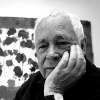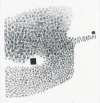Wassily
Kandinsky
Wassily Kandinsky, a pioneer of Abstract Art, is known for his bold use of colour and geometric forms. If you’re looking for original Wassily Kandinsky prints and editions for sale or would like to sell, request a complimentary valuation and browse our network’s most in-demand works.
Wassily Kandinsky art for sale
Discover Wassily Kandinsky prints for sale, exclusively available through our private network of collectors. Explore signed and unsigned screenprints, lithographs, digital prints, and rare editioned proof prints by era-defining blue chip artists.
Sell Your Art
with Us
with Us
Join Our Network of Collectors. Buy, Sell and Track Demand
Biography
Wassily Kandinsky's spiritual and philosophical approach to painting revolutionised the art world in the early 20th century. His approach to colour and shape was foundational in the development of Abstract Art. Born in Moscow on 16 December 1866, Kandinsky was exposed to a vast range of cultural influences from a young age, from music to literature. Although he initially pursued a career in law and economics, his passion for art led him to Munich, where he dedicated himself to painting. Kandinsky's journey from representational art to abstraction was driven by his belief in the spiritual resonance of colour and form, a vision that culminated in his seminal works and theoretical writings.
His early works, such as his 1903 oil painting titled Blue Rider, reflect his interest in symbolism and the emotive quality of colour. As he developed his artistic language, Kandinsky began to move away from representation, striving instead to capture the essence of inner experience through abstraction. This shift is epitomised in his iconic 1913 work Composition VII (1913), a painting that exemplifies his innovative approach to painting.
Composition VII is considered to be one of Kandinsky’s most important works, representing the first time he felt he visually communicated his developing artistic philosophy. In his seminal book, Concerning the Spiritual in Art, Kandinsky describes three types of artistic inspiration: impression, improvisation, and composition. The third, composition, is described as “an expression of a slowly formed inner feeling, which comes to utterance only after long maturing”. This concept is vividly realised in Composition VII, which Kandinsky meticulously planned over several months, creating more than 30 preliminary sketches. These sketches helped him build towards an image that is entirely devoid of impression and improvisation, showcasing a matured artistic vision.
Beyond his artistic practise, Kandinsky was also a theorist and educator. In 1922, Kandinsky accepted a teaching position at the Bauhaus, the state-sponsored Weimar school of art and applied design founded by architect Walter Gropius. The school’s curriculum was based on the principle that the crafts were equal to the fine arts and was organised according to a mediaeval-style guild system of training under the tutelage of masters. Kandinsky conducted the Wall Painting Workshop and Preliminary Course and taught at all three of the school’s sequential locations in Weimar, Dessau, and Berlin until 1933, when the Bauhaus was closed due to pressure from the National Socialist (Nazi) government.
At the Bauhaus, geometric shapes came to play a dominant role in Kandinsky’s pictorial vocabulary. He increased his use of overlapping, flat planes and clearly delineated forms, influenced by the Suprematist work of Kazimir Malevich and the art of the Constructivists. His turn toward geometric forms was a testament to the influence of industry and developments in technology.
Printmaking was an integral part of Kandinsky's artistic practice, as demonstrated by his 1922 lithography series Kleine Welten (Small Worlds). This series exemplifies his ability to translate his abstract vision into print, using geometric forms and vibrant colours to create compositions that are both dynamic and harmonious. Kleine Welten I showcases Kandinsky's sensitive understanding of balance and movement, reflecting his broader exploration of abstract forms.
Kandinsky's legacy is characterised by his pursuit of a new artistic language that captures the spirituality of the human condition. His work, celebrated in numerous exhibitions and housed in major museums worldwide affirms his position as a towering figure in the history of Modern Art.










































